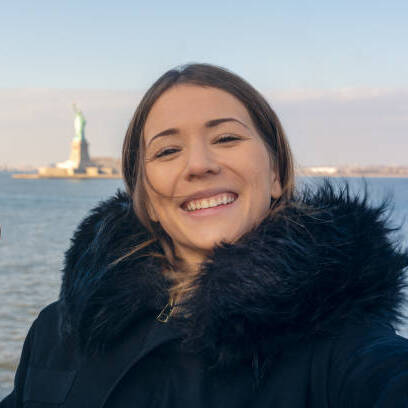Managing diabetes often involves a delicate dance of medication, diet, and lifestyle. For millions, this includes the use of injectable insulin or other biologic drugs. But have you ever wondered what happens after that tiny pinprick? The journey from injection to action is a fascinating voyage through your body, a precisely orchestrated process that unlocks the energy stored in your food. This article will explore the remarkable pathway of these medications, the science behind their design, and the statistics that underscore their global importance.

The Starting Point: Types of Injectable Medications 🩹
Not all diabetes injections are the same. They are primarily designed to either supplement what the body cannot produce or enhance its natural abilities. The main categories include:
- Insulin: Essential for people with type 1 diabetes and many with type 2 diabetes. It acts as a key 🔑 to allow glucose to enter cells.
- GLP-1 Receptor Agonists: These medications mimic the action of a natural gut hormone called incretin. They tell the pancreas to release insulin after eating, slow down digestion, and signal the brain to feel full 🧠.
- Amylin Analogues: Mimic another hormone, amylin, which works alongside insulin to control glucose after meals.
The following table breaks down the common types and their primary roles:
| Medication Type | Primary Role in the Body | Typical Onset & Duration ⏱️ | Common Brand Examples (for illustration) |
|---|---|---|---|
| Rapid-Acting Insulin | Controls blood sugar spikes during meals 🍽️ | Onset: 15 min. Duration: 2-4 hours | Humalog, NovoRapid, Apidra |
| Long-Acting Insulin | Provides a steady "basal" level for all-day background control 📊 | Onset: 1-2 hours. Duration: Up to 24+ hours | Lantus, Levemir, Tresiba |
| GLP-1 Receptor Agonists | Boosts insulin release, suppresses glucagon, slows gastric emptying, promotes satiety | Onset: Varies. Duration: Several days to a week | Ozempic, Trulicity, Victoza |
| Amylin Analogues | Slows gastric emptying, prevents post-meal glucose spike, reduces appetite | Onset: 30 min. Duration: 3 hours | Symlin |
Step 1: The Injection and Absorption Journey 🚀
The journey begins with the injection. The location—abdomen, thigh, or upper arm—can subtly influence how quickly the medication is absorbed. The abdomen generally offers the fastest and most consistent absorption rate.
Once injected, the medication doesn't instantly enter the bloodstream. It first navigates the subcutaneous tissue, the fat layer beneath the skin. Here, it must be absorbed into the tiny capillaries (blood vessels). This absorption phase is a critical bottleneck that drug manufacturers carefully engineer. 🧪 Factors like blood flow to the area, skin temperature, and even exercise can affect this speed.
Statistically Speaking: A study on insulin absorption found that it can be up to 50% faster when injected into the abdomen compared to the thigh. Furthermore, exercising a limb after injection can increase absorption by up to 30-50% due to increased local blood flow! 💨
Step 2: The Circulation Highway 🚗💨
After absorption, the medication enters the bloodstream, the body's superhighway. This is where it gets distributed throughout the entire system. This phase is known as bioavailability—the proportion of the drug that enters circulation and can have an active effect. For most modern subcutaneous injections, bioavailability is highly efficient, often exceeding 90%.
The medication doesn't travel alone. It often binds to proteins in the blood, like albumin. This creates a "reservoir" of sorts; only the unbound, free fraction of the medication is active and can interact with its target receptors. This binding process helps regulate the medication's activity and duration.
Step 3: Finding the Target - The Mechanism of Action 🎯
This is the most crucial step: action. The medication travels until it finds its specific target receptors on cell surfaces. It's a true lock-and-key mechanism.
- Insulin's Action: Insulin molecules bind to insulin receptors on cells, primarily muscle, fat, and liver cells. This binding signals the cell to activate special glucose transporters (GLUT4). Imagine the insulin receptor as a lock on a door, and insulin is the key that unlocks it. The GLUT4 transporters are the doors themselves that swing open, allowing glucose to flood out of the bloodstream and into the cell to be used for energy. ⚡
- GLP-1 Agonists' Action: These drugs bind to GLP-1 receptors on pancreatic beta cells. This binding prompts a cascade of events: a release of insulin when blood sugar is high, a suppression of glucagon (a hormone that tells the liver to release stored sugar), a slowing of the stomach's emptying, and a signal to the brain's appetite centers.
Step 4: The Peak and Duration Curve 📈
The medication's life in the body is a story told by its pharmacokinetic profile—the measure of its absorption, distribution, metabolism, and excretion. This creates a predictable curve of action:
- Onset: The time until it starts working.
- Peak: The time when it is at its maximum strength.
- Duration: The total length of time it remains active.
Understanding this curve is paramount for patients and healthcare providers to time injections with meals and avoid hypoglycemia (dangerously low blood sugar). A rapid-acting insulin, for instance, is timed to peak precisely when your digested food is releasing glucose into your bloodstream.
Step 5: Breakdown and Elimination ♻️
Like all things in the body, the medication's job must eventually come to an end. The body begins to break it down and remove it. Insulin is primarily metabolized in the liver and kidneys by enzymes that break the protein molecule down into its constituent amino acids. These amino acids are then recycled by the body to build other proteins. The kidneys finally filter out any remaining waste products for excretion.
GLP-1 agonists are also broken down by widespread enzymes and filtered out by the kidneys. Their longer duration is achieved through clever chemical engineering, such as attaching a fatty acid chain or binding to albumin, which makes them resistant to rapid breakdown.
The Big Picture: Why This Journey Matters 🌍
The intricate design of these medications highlights the incredible advances in medical science. The global impact is staggering:
- Global Prevalence: According to the International Diabetes Federation (IDF), approximately 537 million adults were living with diabetes in 2021. This number is projected to rise to 643 million by 2030.
- Insulin Dependency: Of these, it is estimated that over 100 million people worldwide require insulin to survive, including all type 1 diabetics and a significant portion of type 2 diabetics.
- The Economic Factor: The global insulin market was valued at over $25 billion in 2022, underscoring the massive scale of production and research dedicated to improving these life-saving drugs.
The Future of the Journey: Innovation on the Horizon 🔬
The journey of diabetes medication is still evolving. Scientists are tirelessly working to improve this pathway:
- Ultra-Rapid Insulins: New formulations that act even more quickly to mimic a natural pancreas.
- "Smart Insulins": Insulins that are activated only when blood sugar is high, significantly reducing the risk of hypoglycemia. This is often called the "holy grail" of diabetes research.
- Weekly and Monthly Formulations: Reducing the injection burden from daily to weekly or even monthly through advanced slow-release technologies.
- Alternative Delivery Systems: Inhalable insulin and the continued development of closed-loop automated insulin delivery systems (artificial pancreases) are changing the landscape of daily management.
The journey from injection to action is a testament to biological complexity and human ingenuity. It's a voyage that happens silently within millions of people every day, enabling them to harness energy, stay healthy, and lead full, vibrant lives. 👏





